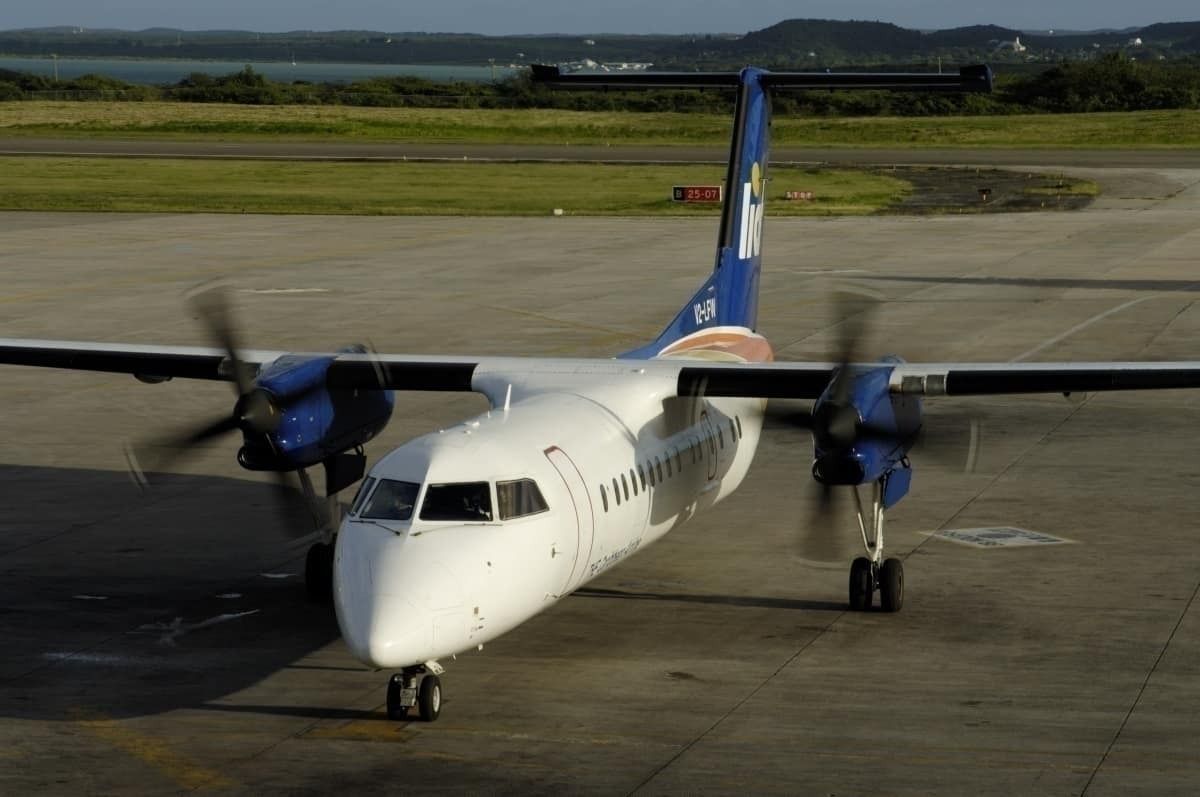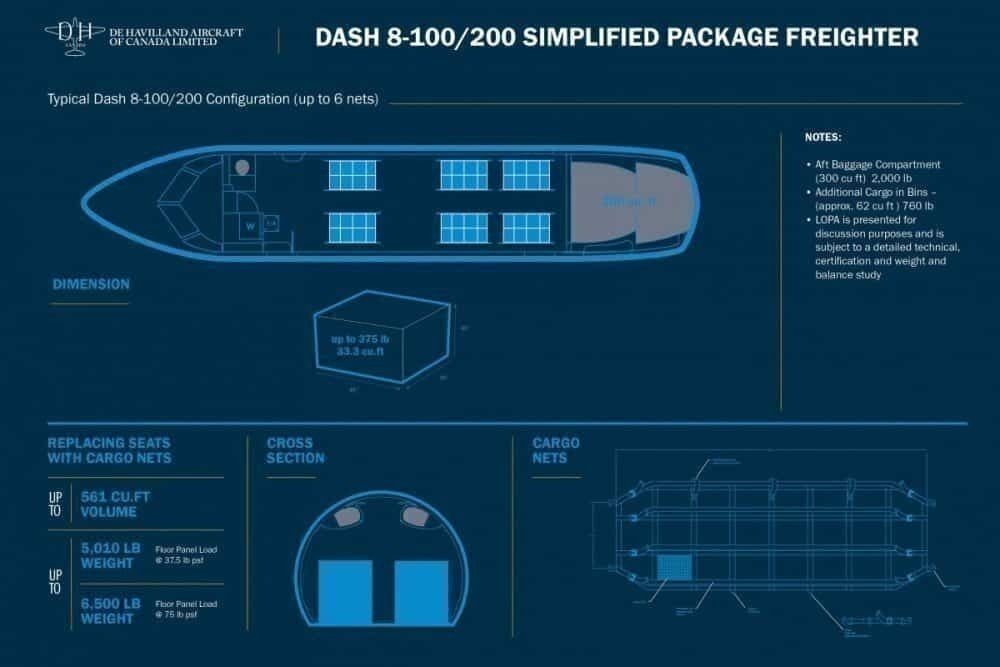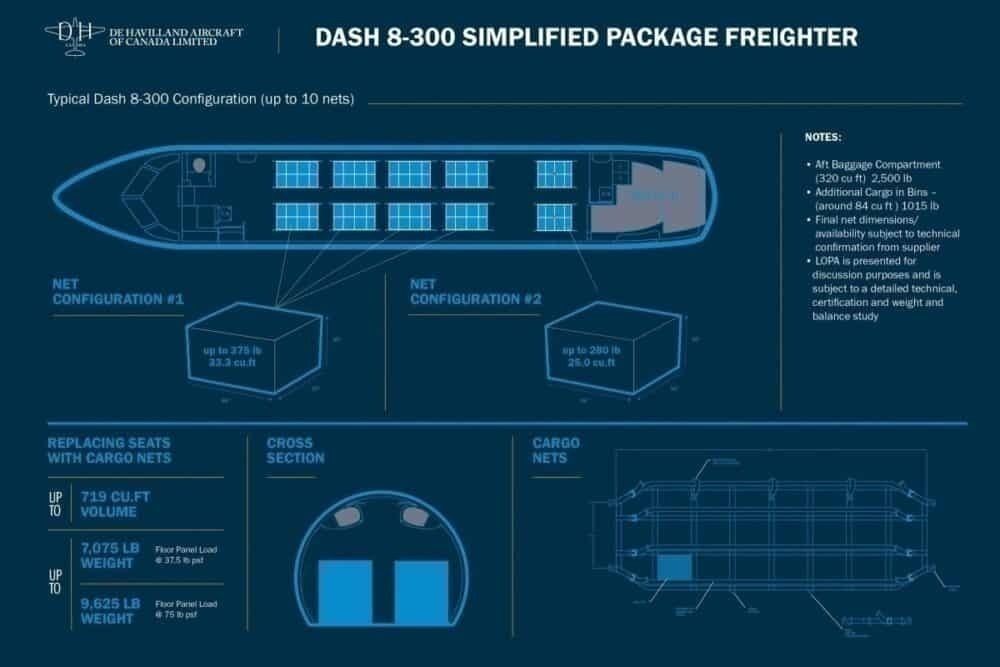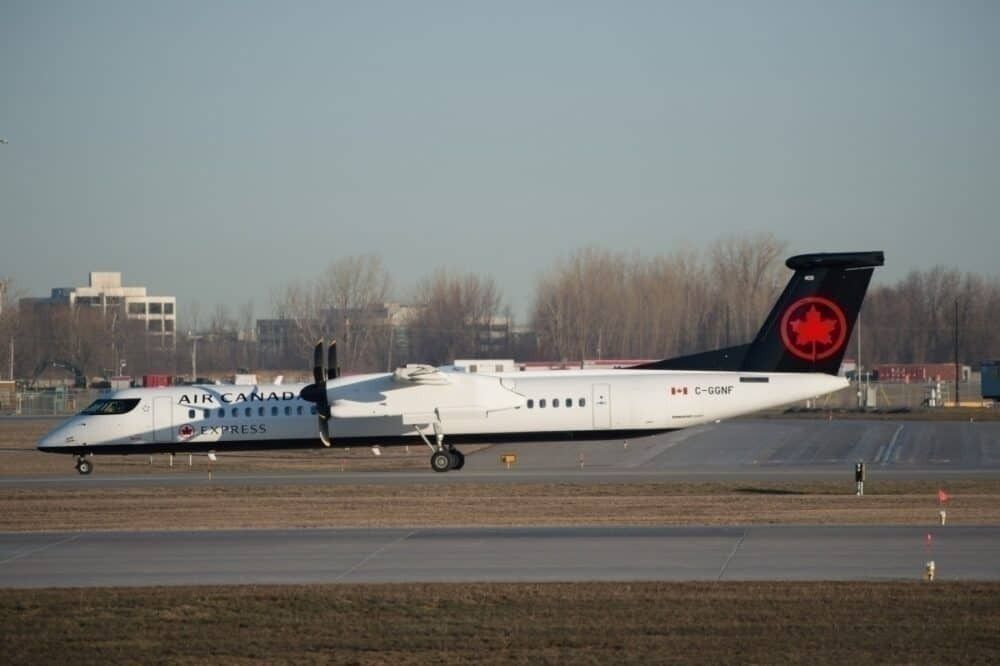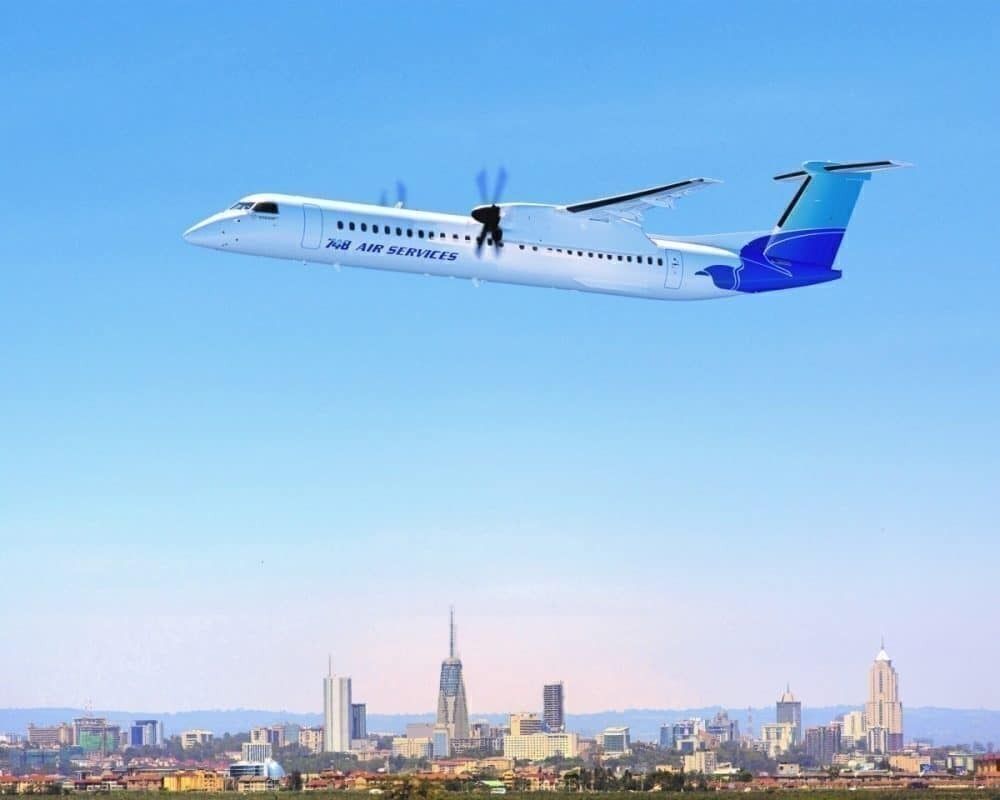De Havilland Canada has launched new Dash 8 freighter conversion programs. Announced on May 12th, the program has received approval from Transport Canada for Dash 8-100/200 and Dash 8-300 aircraft. One Dash 8-100 operator, 748 Air Services, has ordered the conversion kit for four Dash 8-100 aircraft due to the increased freight demand resulting from the COVID-19 pandemic.
Dash 8-100, -200, and -300 conversion progarms
De Havilland Aircraft of Canada, the manufacturer for Dash 8 turboprops, has announced that Canada's regulatory agency for air travel has approved freighter conversion programs for the rest of the Dash 8 fleet.
Previously, De Havilland launched conversion kits for Dash 8-400 aircraft. The first customer for this program was Air Canada Jazz for up to 13 Dash 8-400 planes.
The Dash 8-100/200 Simplified Package Freighter Program sees the aircraft lose its passenger seats and instead be replaced with cargo nets. This gives the airlines up to 561 cubic feet in volume. Below is a diagram of the program.
The aircraft is a small regional plane, so it cannot handle large freight. But, it is suitable for transporting smaller, densely packed supplies like masks and gloves. Overhead bins will remain in the aircraft. In these bins, an airline can carry up to 760 pounds of cargo in approximately 62 cubic feet of space. All of this cargo space is in addition to the 300 cubic foot baggage compartment capable of holding up to 2,000 pounds. In total, the Dash 8-100/200 package provides a total potential cargo capacity for up to 6,500 pounds.
The larger Dash 8-300 can carry up to 719 cubic feet of cargo in the cabin. In the overhead bins, there are 84 cubic feet of space available for up to 1,015 pounds of supplies. The baggage compartment can hold another 2,500 pounds in a 320 cubic foot space. The Dash 8-300 conversion can hold up 9,625 pounds of cargo.
While the -100/200s are in a single net configuration, the -300 holds two different net configurations. The back of the aircraft contains smaller packages.
The Dash 8 as cargo planes
Most of the famous cargo planes are widebody Boeing 747s, 777s, and A330s, along with a host of older aircraft that serve as freighters after being converted from passenger operations. However, the Dash 8 has several advantages.
To smaller, regional destinations, an aircraft like a 777 or A330 might not be able to land safely. Or else, there would be too much capacity with such a large jet. Thus, the Dash 8 is a compelling aircraft. While a turboprop might be slower, for cargo, it does not matter quite as much as it would for passengers.
The Dash 8s also need less runway for takeoffs and landings. This, in turn, increases the number of airports where the aircraft can serve. In places like rural Canada or Africa, this is a must.
748 Air Services, the launch customer for this conversion, highlights the varied roles that these converted aircraft will support: humanitarian missions, natural resource sectors, and government operations.
Other customers may come onboard with this new conversion as needed. This is especially true if the pandemic continues to wreak havoc, and local communities require necessary medical equipment.
Do you think more airlines should convert their Dash 8 planes to carry cargo? Let us know in the comments!

